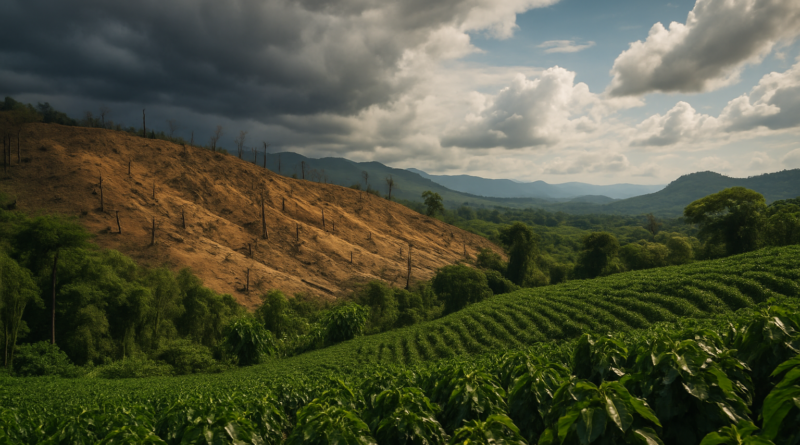Can Sustainable Coffee Farming Really Fight Climate Change?
What Climate Change Has to Do With Your Morning Coffee
Climate change isn’t just a distant threat—it’s already changing how and where coffee can be grown. Coffee plants are sensitive to heat, moisture, and altitude. They need just the right balance to thrive—and that balance is becoming harder to find.
In Ethiopia, rising temperatures are pushing coffee production into higher elevations, limiting suitable land. In Brazil, extreme weather like frost and drought has already damaged harvests and disrupted supply chains. And globally, the outlook is sobering: if current warming trends continue, up to 50% of today’s coffee-growing land could become unsuitable by 2050.
For farmers, these shifts mean more uncertainty and higher pressure to adapt. That’s where sustainable farming comes in. Climate-smart methods—like protecting tree cover, restoring soil health, and reducing chemical inputs—can help farms stay productive, even as the environment changes.
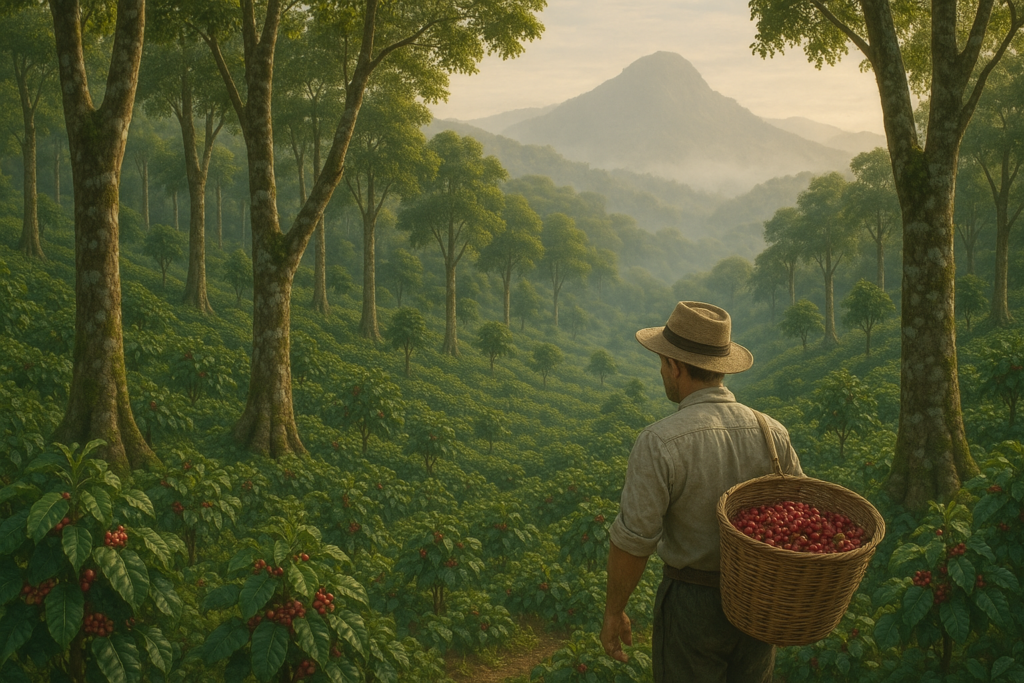
And while climate change also affects prices and availability, that’s a broader story we explore here, in our article on how global warming could reshape who gets to enjoy coffee in the future.
What “Sustainable Coffee Farming” Actually Means
When we talk about sustainable coffee, it’s not just about being “eco-friendly” or cutting back on chemicals. It’s about rethinking how coffee is grown—from the ground up—so that it supports long-term ecological health, rather than depleting it.
That can take many forms. Some farms grow coffee under trees, maintaining forest cover and encouraging biodiversity. Others focus on building healthy soil through composting and crop rotation, or improving water use by managing rainfall more effectively. Reducing reliance on synthetic fertilizers and pesticides is just one piece of the puzzle.
One of the most recognizable examples is shade-grown coffee, where coffee plants grow beneath a canopy of trees. This method supports richer ecosystems, protects against erosion, and even helps capture carbon from the air—making it a strong example of climate-smart farming. But it’s not the only one.
Sustainable coffee farming is broader than any single label. Whether it’s through agroforestry, regenerative soil care, or low-impact water systems, the goal is the same: to grow coffee in a way that respects the land and builds resilience for the future.
How Coffee Farming Can Reduce Carbon Footprints
When we think about climate change, coffee farming isn’t always the first thing that comes to mind. But the way coffee is grown can make a real difference—especially when farmers use natural systems to their advantage rather than trying to control or override them.
One of the most powerful tools in sustainable coffee farming is the tree. Shade trees planted throughout coffee farms help absorb carbon dioxide from the atmosphere and store it in their trunks, leaves, and roots. This process, known as carbon sequestration, is one of the most natural and effective ways to slow down climate change.
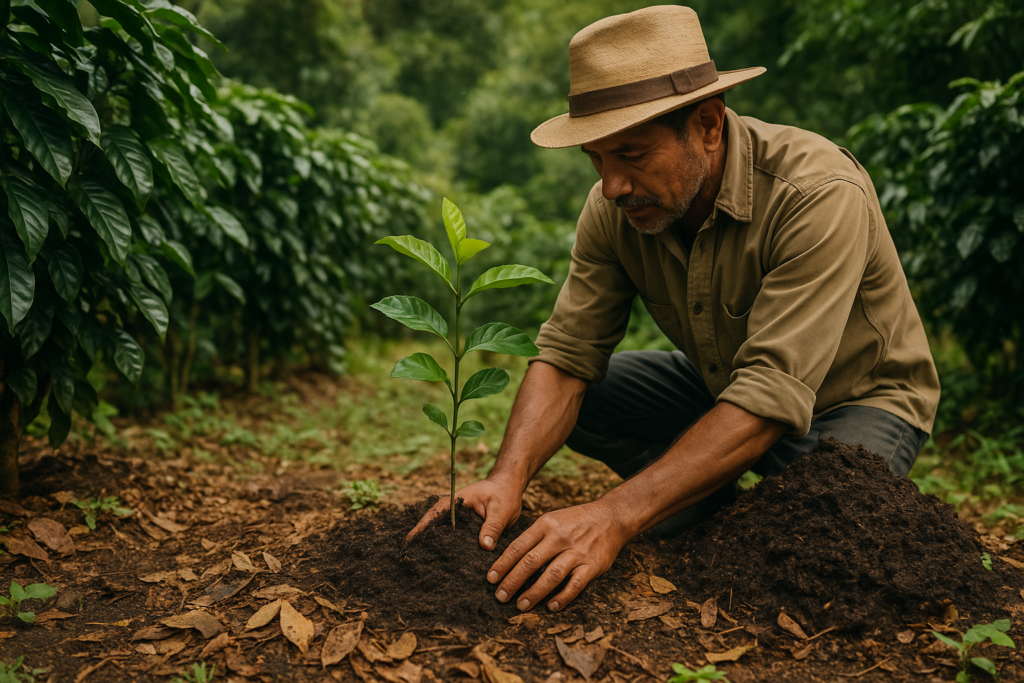
But it doesn’t stop there. Healthy soil plays an equally important role. When farms focus on building rich, organic soil—through composting, mulching, and reducing chemical inputs—they create a living carbon sink beneath the surface. That soil holds more moisture, supports diverse life, and reduces the need for synthetic fertilizers, which are often tied to fossil fuel production.
Water management is also better on sustainable farms. By preserving tree cover and natural vegetation, these farms reduce surface runoff and allow more rain to soak into the ground. That helps recharge groundwater and stabilize local ecosystems, especially in regions where drought is becoming more common.
In short, sustainable farms aren’t just growing coffee—they’re storing carbon, saving water, and reducing emissions at every step. The result? A smaller climate footprint and a more resilient coffee supply chain.
The Problem with Conventional Coffee Farming
Now let’s look at the flip side. Conventional coffee farming—especially large-scale sun-grown operations—often involves clearing forests to plant coffee in open fields. That deforestation releases massive amounts of carbon that trees once held. And without tree cover, the soil becomes more vulnerable to erosion, drying out, and degradation.
To make up for poor soil and higher pest pressure, these farms often depend on synthetic fertilizers, pesticides, and irrigation—inputs that usually rely on fossil fuels. The result? More emissions, less biodiversity, and less climate resilience.
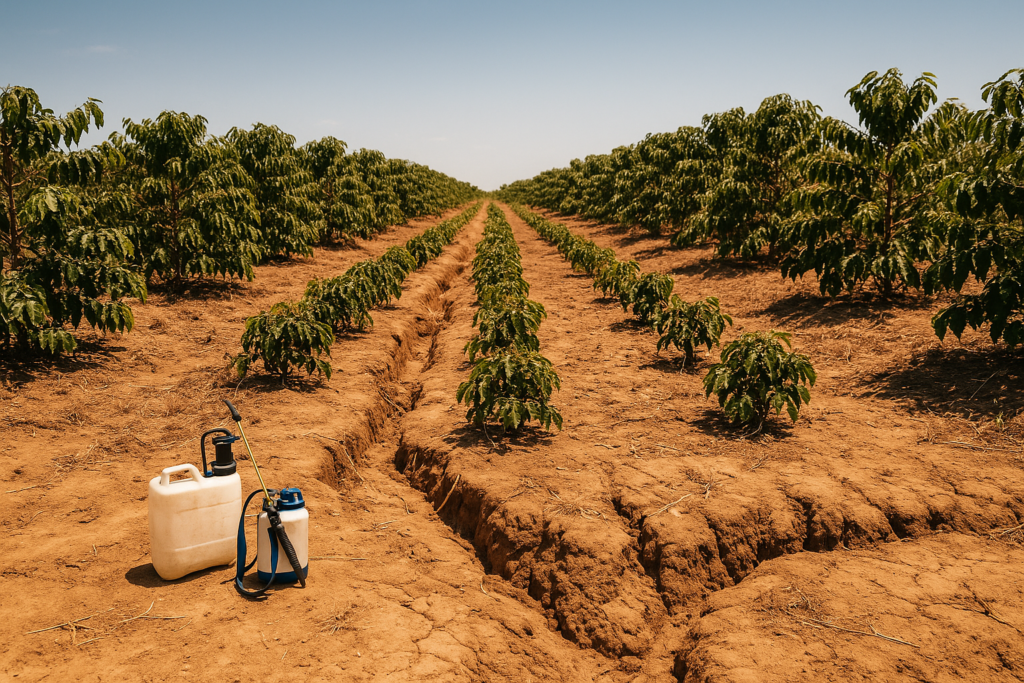
The reality is that sun-grown coffee may offer faster harvests and higher short-term yields, but it comes with long-term environmental costs that sustainable methods aim to avoid.
Can Sustainable Coffee Really Make a Difference?
It might seem like one farm—or one bag of coffee—couldn’t possibly change something as big as climate change. But when thousands of farms adopt sustainable practices, the impact adds up. In countries like Peru, Colombia, and Ethiopia, many smallholder farmers are already using climate-smart methods: planting native shade trees, rotating crops, protecting watersheds, and restoring soil health. These farms don’t just survive environmental challenges—they help buffer against them.
While sustainable coffee farming alone won’t solve the climate crisis, it’s part of a much-needed shift. Supporting farming methods that protect forests, restore ecosystems, and lower emissions is a concrete way the coffee industry can play a role in climate solutions. And as more consumers choose responsibly grown coffee, demand can help push the industry in the right direction—from farm to roaster to shelf.
What to Look For When Buying Climate-Friendly Coffee
Not all “sustainable” claims mean the same thing. So how can you tell if a coffee brand is actually supporting climate solutions—or just sounding good?
Start with trusted certifications. Labels like USDA Organic or EU Organic mean the coffee was grown without synthetic chemicals. Bird Friendly® goes further by requiring both organic farming and full shade cover with native trees—making it one of the most reliable signs of climate-smart coffee.
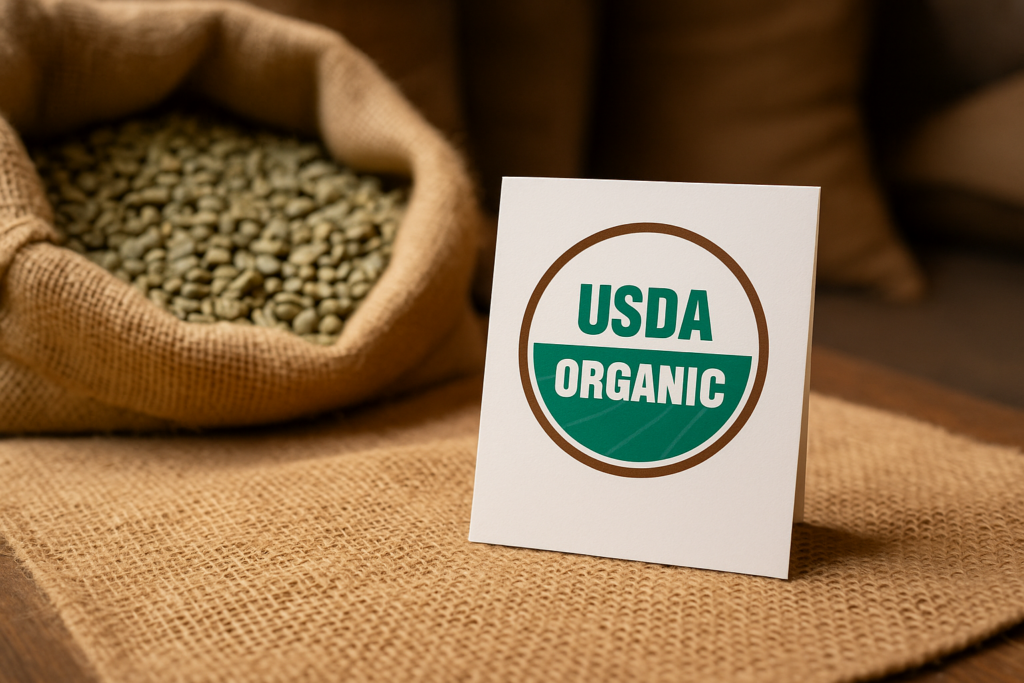
The Rainforest Alliance seal is also a good indicator, covering areas like forest and water protection, though it doesn’t always guarantee shade-grown practices. Beyond labels, transparency matters. Brands that name specific farms, talk about how the coffee is grown, or mention practices like composting or agroforestry usually have more substance behind their claims. If that information is hard to find, the sustainability might be more about marketing than action.
Be wary of vague phrases like “eco-roast” or “green-friendly” without clear context. A good-looking label doesn’t always tell the full story. If a company shows where your coffee comes from and how it’s produced, you’re more likely supporting real climate-friendly farming—not just a feel-good brand.
Where Sustainable Coffee Fits Into the Climate Solution
Sustainable coffee farming isn’t a cure-all, but it plays a real role in reducing emissions, protecting ecosystems, and building resilience where it’s needed most. Farms that preserve tree cover, rebuild soils, and rely less on fossil fuel-based inputs can become part of the climate solution—not part of the problem.
Choosing coffee grown with these principles in mind may seem like a small act, but it adds up. With more farmers adopting climate-smart methods and more consumers supporting them, the impact can reach far beyond the farm—toward a coffee industry that’s not only better for people, but better for the planet too. Choosing well-grown coffee isn’t about being perfect—it’s about making everyday choices that move the system in the right direction.

